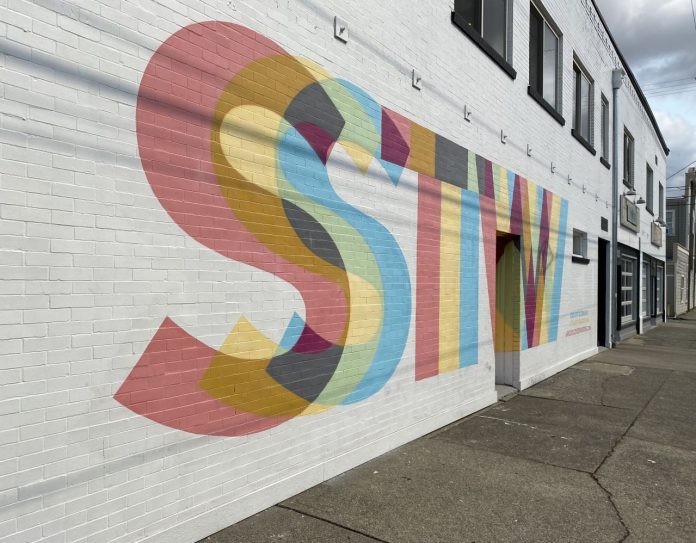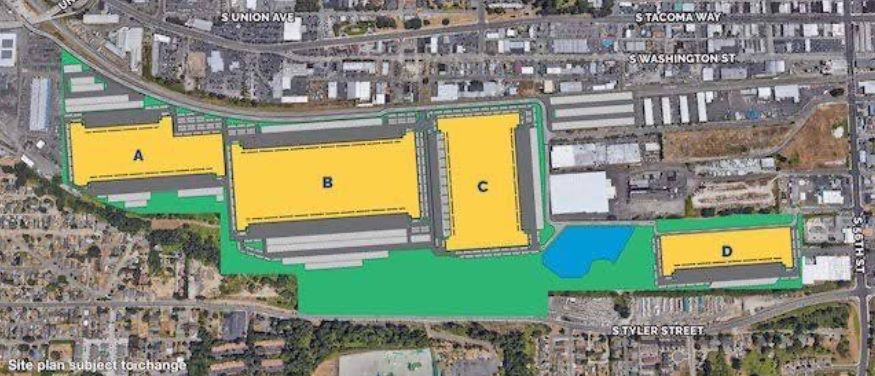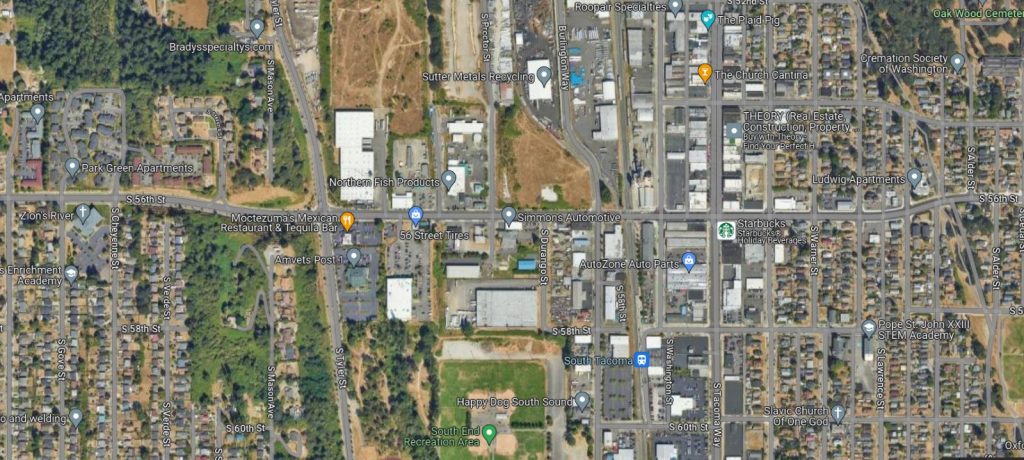
How a proposed (and now permitted) large industrial development intersects with plans to engage South Tacoma Way in community-led planning.
Residents of South Tacoma who oppose industrial development in their neighborhood received unwanted news in April of this year when the City of Tacoma announced its decision to approve plans submitted for “construction of four industrial-use buildings totaling approximately 2,500,000 square feet” by developer Bridge Industrial.
Opponents of the project cite the need to protect the city’s aquifer, general concerns over public health, and a history and legacy of racism and environmental injustices as reasons to prevent further industrial development in South Tacoma. A group called the Climate Alliance of the South Sound made just such a case in an op-ed in The Urbanist.
Instead of traditional industrial development, which would exacerbate a lot of what currently ails South Tacoma — poor air quality, traffic congestion, and a lack of greenspace — residents propose the development of an “economic green zone.” For its part, the City’s permit approval comes with a “Mitigated Determination of Non-significance concurrently with the land use decision,” which, according to State of Washington Department of Ecology’s explanation, “documents the responsible official decision that a proposal is unlikely to have significant adverse environmental impacts.”
That it is a “mitigated determination” refers to the additional steps the City took to engage public concerns about the development. Per the Department of Ecology, a mitigated determination means that the permitting process “has had more public process and greater scrutiny because the proposal has likely significant adverse impacts.”
While the term “green zone” has no specific legal definition, it represents an emerging planning designation that seeks to protect a community’s environmental and natural resources and its economy by imposing regulations and increasing enforcement in an effort to reduce pollution. A green zone creates a framework through which communities can resist land use policies that allow further polluting development to occur within them. And while green zones do call for more parks, gardens, and farms, there is a greater emphasis on attracting and supporting economic development that brings “green” jobs to the community.
The emergence of the green zone concept has links to the environmental justice movement, which originates with local communities organizing to support a specific polluting development in their “backyard.” Over time, the environmental justice movement has grown to encompass more than simply fighting back “smokestack by smokestack,” and towards inclusion: A major precept in environmental justice is the idea that those who have typically been forced to host polluting industry in or near their neighborhoods — Black, Indigenous, and Latino communities — should be at the center of efforts to clean these areas up, as well as central to conversations about land use and development.
Those who oppose the site development proposal put forth and now permitted by the City of Tacoma for the lot that sits between I-5 and S Tyler Street between S 38th and S 56th Street are not against any industrial development area, rather they propose that it be “green industry” that goes in.

Green industry refers not only to those businesses which directly participate in the transition from a carbon economy into a less polluting one (a company that manufactures solar panels, for example), but also to any economic activity that actively engages in sustainability — environmental and economic. Green industry is as much about attracting and supporting businesses that manufacture and provide services that enable more people to have a less destructive impact on the planet, as it is about businesses which seek to lower their own impact. In other words, green economic development is itself sustainable and enables further sustainability.
A person who can find fulfilling, well-paying work locally is less likely to make the hour-long commute to Seattle five days a week. An economic green zone seeks to attract industry and business which emphasize environmental sustainability and support the local economy so that nearby residents can also benefit from and contribute to sustainability.
The permit granted in April of this year means that South Tacoma will very likely be getting an industrial development that is as large as 43 football fields in the near future. This area of Tacoma is home to a diverse set of people earning, on average, less than $60,000 a year. South Tacoma, with its proximity to I-5 and existing industry, has long been the site of much environmental injustice, and without a proper environmental review and the protections such a review could result in, it is hard to see how this permit and the development it allows will not further impact the health and quality of life of South Tacoma residents.
At the same time, the City has announced plans to engage residents living along South Tacoma Way, a major thoroughfare that runs near the proposed development, in a revisioning of its business district through its Neighborhood Planning Program. Much of South Tacoma Way consists of strip malls and used auto lots. A small stretch at the intersections of S 56th offers a small but thriving collection of local businesses, restaurants, and bars, and there’s a Sounder station just a couple blocks away.

Certainly, this part of Tacoma is ready for this community-engaged planning process. Residents have managed to curate a bustling set of businesses in a part of the city that has historically suffered from car-centric development and various types of neglect. The Neighborhood Planning Program engages residents in the creation of “strong, vibrant, and diverse neighborhoods” by connecting well with what local residents have said they want for South Tacoma Way.
The proximity of the new proposed development seems to contradict these efforts. This is a contradiction that can exist, however, because as Jeff Capell, Tacoma’s hearing examiner, who is the “responsible official” on whose decision the permit is premised, told KUOW: “If we’re talking about socio-economic impacts, environmental justice impacts, all those things, unless you can show me those are codified in SEPA [the State Environmental Policy Act], they are objectionable and I can’t do anything with them anyway.”
We may be intent on remaking our neighborhoods and local economies to be more sustainable so that they allow more of us to live healthy, abundant lives. Until we codify this awareness and these desires into our laws, cities and the officials that make determinations for them can choose to ignore environmental injustice when facing questions that pit people, the environment, and business interests against each other.
Awareness over environmental justice may be rising. So too our desire to address the various ways racism and oppression have been cemented in our neighborhoods. Any actual and ethical effort to address environmental injustice in our cities must include the perspective and ideas of those who have been mostly and historically impacted by degradation and injustice.

Rubén Casas
Rubén joined The Urbanist's board in 2022. He is a scholar and teacher of rhetoric and writing at the University of Washington Tacoma. He is also the faculty lead of the Urban Environmental Justice Initiative at Urban@UW. In his work and advocacy, Rubén examines how cities and the institutions that comprise them imagine, plan, and build in ways that promote and/or discourage community and a sense of place.
